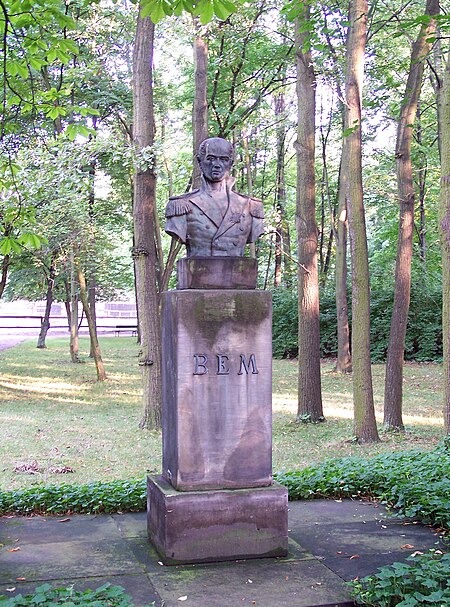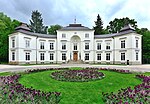Józef Bem Monument
1924 establishments in Poland1924 sculpturesBronze sculptures in PolandBuildings and structures completed in 1924Busts (sculpture) ... and 7 more
Monuments and memorials in WarsawOutdoor sculptures in WarsawRelocated buildings and structuresSculptures of men in PolandStatues in PolandStatues of military officersUjazdów, Warsaw

The Józef Bem Monument (Polish: Pomnik Józefa Bema) is a monument in Warsaw, Poland, placed in the Royal Baths park, within the Downtown district. It consists of a bust of Józef Bem, a 19th-century military officer, who was a leader of the Polish insurgent forcess during the November Uprising. It was designed by Bohdan Święcicki, and unveiled in 1924. Originally it was placed at Dwudziestego Dziewiątego Listopada Street, and it was moved to its current location in 2004.
Excerpt from the Wikipedia article Józef Bem Monument (License: CC BY-SA 3.0, Authors, Images).Józef Bem Monument
29 Listopada, Warsaw Midtown
Geographical coordinates (GPS) Address External links Nearby Places Show on map
Geographical coordinates (GPS)
| Latitude | Longitude |
|---|---|
| N 52.213805555556 ° | E 21.038 ° |
Address
Józef Bem
29 Listopada
00-465 Warsaw, Midtown
Masovian Voivodeship, Poland
Open on Google Maps











